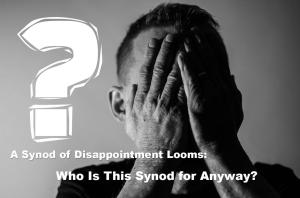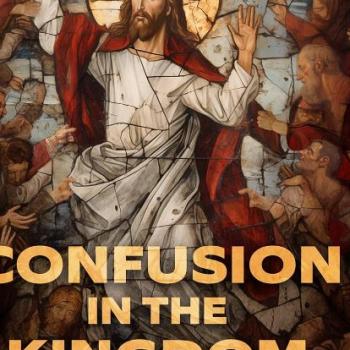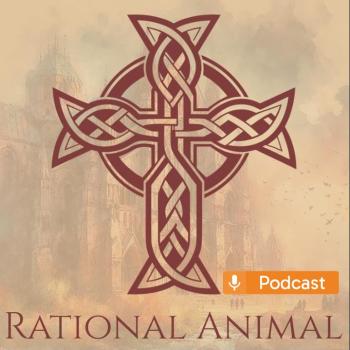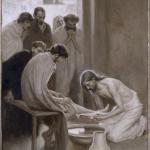As the Synod of Synodality approaches the First Session in October of 2023, its overseers recently released the document Instrumentum Laboris (IL). This document serves as a guide for all discussions to take place during the First Session. At the reveal of the document, Cardinal Jean-Claude Hollerich, General Rapporteur for the October General Assembly, answered a question regarding those who feel excluded by Church teaching on sexuality without changing Church teaching. He answered with the following:
We do not speak about the Church’s teaching. That is not our task and not our mission. We just speak to welcome everybody who wants to walk with us. That is something different.
Now, if one reads the document, the issues with Church teaching do appear, yet with no answer as to HOW the Church can both hold to her teaching AND “welcome everybody…”. To me, this strategy sets those hoping for change in Church teaching up for immense disappointment.
In this article, I highlight some major red flags found in the IL document. Given the Church’s consistent teaching on human sexuality, those within the Church pushing for change will ultimately suffer disappointment. Furthermore, if those in synodal authority find a way to successfully de-emphasize Church teaching, those who support Church teaching will also ultimately suffer disappointment. Therefore, regardless of how the Synod of Synodality turns out, the only certain outcome is disappointment.
The Language Used
First off, the language used in the document is problematic. For example, the word holy, the end goal of our lives, appears 23 times, but not in the sense commonly used. Out of those usages, this word is used 22 times in a title, as in Holy Spirit and Holy Father, and one time to the “holy mystery of God” in paragraph 29. Certainly, for us to “walk together,” we must walk on the same road towards holiness, right? Furthermore, the word feel appears 21 times and reflects its common meaning and the true feel of the document’s intention. For example, one of the questions for reflection at the First Session asks those in attendance to ponder:
How can we create spaces where those who feel hurt by the Church and unwelcomed by the community feel recognized, received, free to ask questions and not judged? In the light of the Post Synodal Apostolic Exhortation Amoris Laetitia, what concrete steps are needed to welcome those who feel excluded from the Church because of their status or sexuality (for example, remarried divorcees, people in polygamous marriages, LGBTQ+ people, etc.)?
Who Is Hurt, and Why?
Why do some Catholics feel “hurt by the Church?” In what ways do they feel “unwelcomed by the community?” Do they feel “hurt” by Church teaching? Do they feel “unwelcomed” because they refuse to submit to the will of God concerning their sexual lives? How exactly should the Church create spaces (appears 24 times) for things the Church identifies as sin? These valid questions do not appear in the document. Mark my words, these questions (or similar ones) will come up during the First Session in October.
Rehashed Catholic Progressivism: Jettisoning the Cruel Past
Moreover, Fr. Gerald E. Murry at The Catholic Thing made the following comment in his article “The Synodal Church of Me, Myself, and I” concerning the emotional emphasis of the synodal document:
The motto for this new Synodal approach could easily be “People, not Doctrines, Я Us.” This emotion-centered focus is the template for the hoped-for “soft” revolution in the Church in which Catholic doctrines that contradict decadent Western sexual mores and radical feminist claims of oppression in the Church are framed as obsolete, regrettable, and needless sources of discord and alienation, as holdovers from a cruel past. These doctrines, of course, need to be jettisoned, lest anyone feel unwelcome.
Sadly, when one reads IL, Fr. Murry’s assessment rings true. In the attempt to make the Church more “attractive” to the culture, the organizers of the synod seem to seek Fr. Murry’s “soft revolution.” In the concluding paragraph of IL, the means by which to pretty up the Church by renewal of the language used in its “liturgy, preaching, catechesis, sacred art, as well as in all forms of communication addressed to the Faithful and the wider public…”. Such a renewal, the organizers hope, will make the Church more accessible and attractive, “rather than an obstacle that keeps them at a distance” to the Catholics “of our time.”
An Attractive Church?
One gets the impression that the organizers seek to make the Church more attractive or its teachings easier to digest. This attempt at a more palatable Church seems to contradict Jesus’ warnings in Matthew 7:13. Here, Jesus warns His followers to:
Enter by the narrow gate. For the gate is wide and the way is easy that leads to destruction, and those who enter by it are many.
Now, if the Church only seeks to make clearer what she teaches in order to avoid confusion, no Catholic should stand against such a move. However, if such an attempt means de-emphasizing certain Catholic teachings in order to make Catholicism “easier,” please refer to Jesus’ quote above. The evidence that the synod leans more to the latter appears in its discussion of the acceptance (or lack thereof) of settled Church teaching regarding remarried divorcees. IL states:
For example, if the block stems from a general lack of information, then improved communication will be needed. If, on the other hand, the problem stems from the difficulty of grasping the implications of the documents in ordinary situations or an inability of persons to recognize themselves in what is proposed, a synodal journey of effective reception by the People of God could be the appropriate response. Another instance could be the reappearance of a question which emerges as a sign of a changed reality or situations where there is a need for an “overflow” of Grace. This requires further reflection on the Deposit of Faith and the living Tradition of the Church. [emphasis added]
Carveouts
What do “difficulty of grasping the implications,” “an inability of persons to recognize themselves in what is proposed,” and “a sign of a changed reality or situations” mean? It appears the organizers seek to allow carveouts for those within the Church who find Church teaching difficult, cannot recognize themselves in the teaching, or does not fit their current reality or situation.
The Participation of Women in the Church
Finally, IL highlights the exclusion of women from the ranks of decision-makers within the Church. The document rightly identifies that women occupy a crucial role within the Church laity. One need only to look at any Church or Catholic school website to see an overwhelming female presence in the life and mission of the Church. However, IL paints a settled doctrinal reality, ordained ministry, in terms of exclusion and discrimination. For example, in section 2.3 titled, How can the Church of our time better fulfil its mission through greater recognition and promotion of the baptismal dignity of women?, paragraph C addresses the need for women in greater number in “positions of responsibility and governance…”
The paragraph ends with an admonition for such a move, stating it needed to “offer greater recognition of women’s baptismal dignity and rejection of all forms of discrimination and exclusion faced by women in the Church and society;” Surely, the IL document is not inferring that established Church doctrine as discriminatory or exclusionary?
The section ends with two “reflective” questions:
4) Most of the Continental Assemblies and the syntheses of several Episcopal Conferences call for the question of women’s inclusion in the diaconate to be considered. Is it possible to envisage this, and in what way?
5) How can men and women better cooperate in pastoral ministry and exercising related responsibilities?
It seems that the synod’s call for inclusion, tied as the word is to “discrimination and exclusion” in IL, infers that their exclusion must then result from various “forms of discrimination and exclusion…”
A Synod of Disappointment Looms
As I stated in the introduction, given the Church’s consistent teaching on issues like human sexuality, those within the Church pushing for change will ultimately suffer disappointment. The Church cannot change her views on human sexuality. Furthermore, if those in synodal authority find a way to successfully de-emphasize Church teaching, those who support Church teaching will also ultimately suffer disappointment. They will see the de-emphasis for what it is: carveouts for acceptable sins. The IL document represents a catch-22 in its endeavor for a more “synodal” and welcoming Church. It attempts to offer hope to more progressive elements within the Church but does not provide a way to realize them, save vague references to the “Spirt” and sensus fidei (sense of the faithful).
Therefore, regardless of how the Synod of Synodality turns out, disappointment is the only certain outcome for all involved.
Thank you!
Read my other writing here.
Please click the link below to join.
Voices of the Faithful in the Synod on Synodality
Please make your voice heard.
I Support Church Teaching in the Synod of Synodality


















